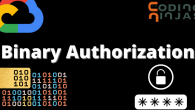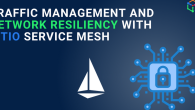
Disaster recovery, RTO, and RPO – Understanding Key Performance Indicators (KPIs) for Your Production Service
Disaster recovery is a comprehensive strategy that’s designed to ensure an organization’s resilience in the face of unexpected, disruptive events, such as natural disasters, cyberattacks, or system failures. It involves the planning, policies, procedures, and technologies necessary to quickly and effectively restore critical IT systems, data, and operations to a functional state. A well-implemented disaster recovery plan enables businesses to minimize downtime, data loss, and financial impact, helping them maintain business continuity, protect their reputation, and swiftly recover from adversities, ultimately safeguarding their long-term success.
Every organization incorporates disaster recovery to varying degrees. Some opt for periodic backups or snapshots, while others invest in creating failover replicas of their production environment. Although failover replicas offer increased resilience, they come at the expense of doubling infrastructure costs. The choice of disaster recovery mechanism that an organization adopts hinges on two crucial KPIs – Recovery Time Objective (RTO) and Recovery Point Objective (RPO).
RTO and RPO are crucial metrics in disaster recovery and business continuity planning. RTO represents the maximum acceptable downtime for a system or application, specifying the time within which it should be restored after a disruption. It quantifies the acceptable duration of service unavailability and drives the urgency of recovery efforts.
On the other hand, RPO defines the maximum tolerable data loss in the event of a disaster. It signifies the point in time to which data must be recovered to ensure business continuity. Achieving a low RPO means that data loss is minimized, often by frequent data backups and replication. The following figure explains RTO and RPO beautifully:

Figure 14.4 – RTO and RPO
A shorter RTO and RPO demand a more robust disaster recovery plan, which, in turn, results in higher costs for both infrastructure and human resources. Therefore, balancing RTO and RPO is essential to ensure a resilient IT infrastructure. Organizations must align their recovery strategies with these
objectives to minimize downtime and data loss, thereby safeguarding business operations and data integrity during unforeseen disruptions.













Leave a Reply